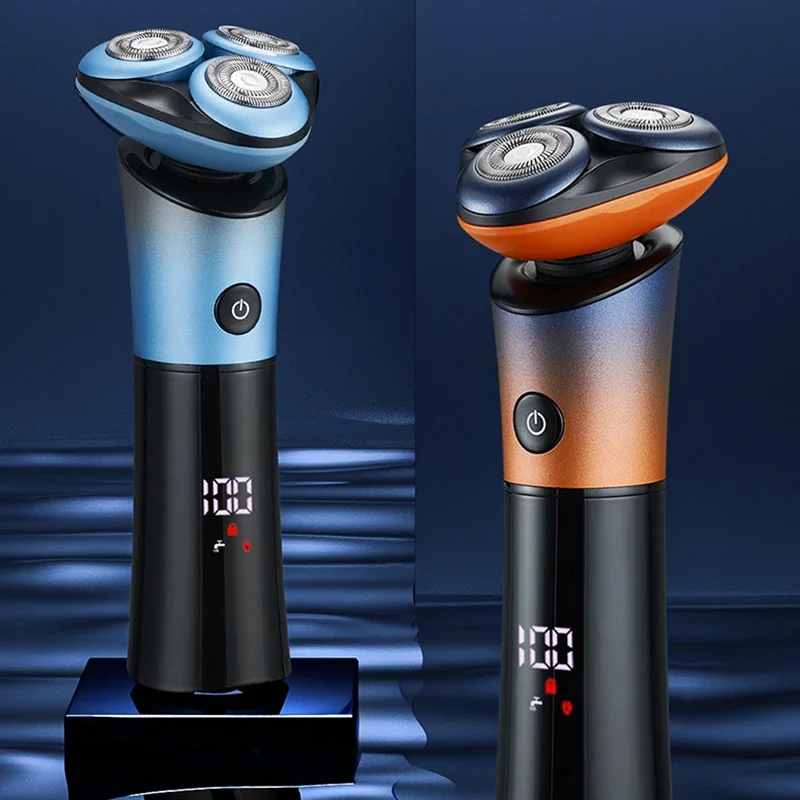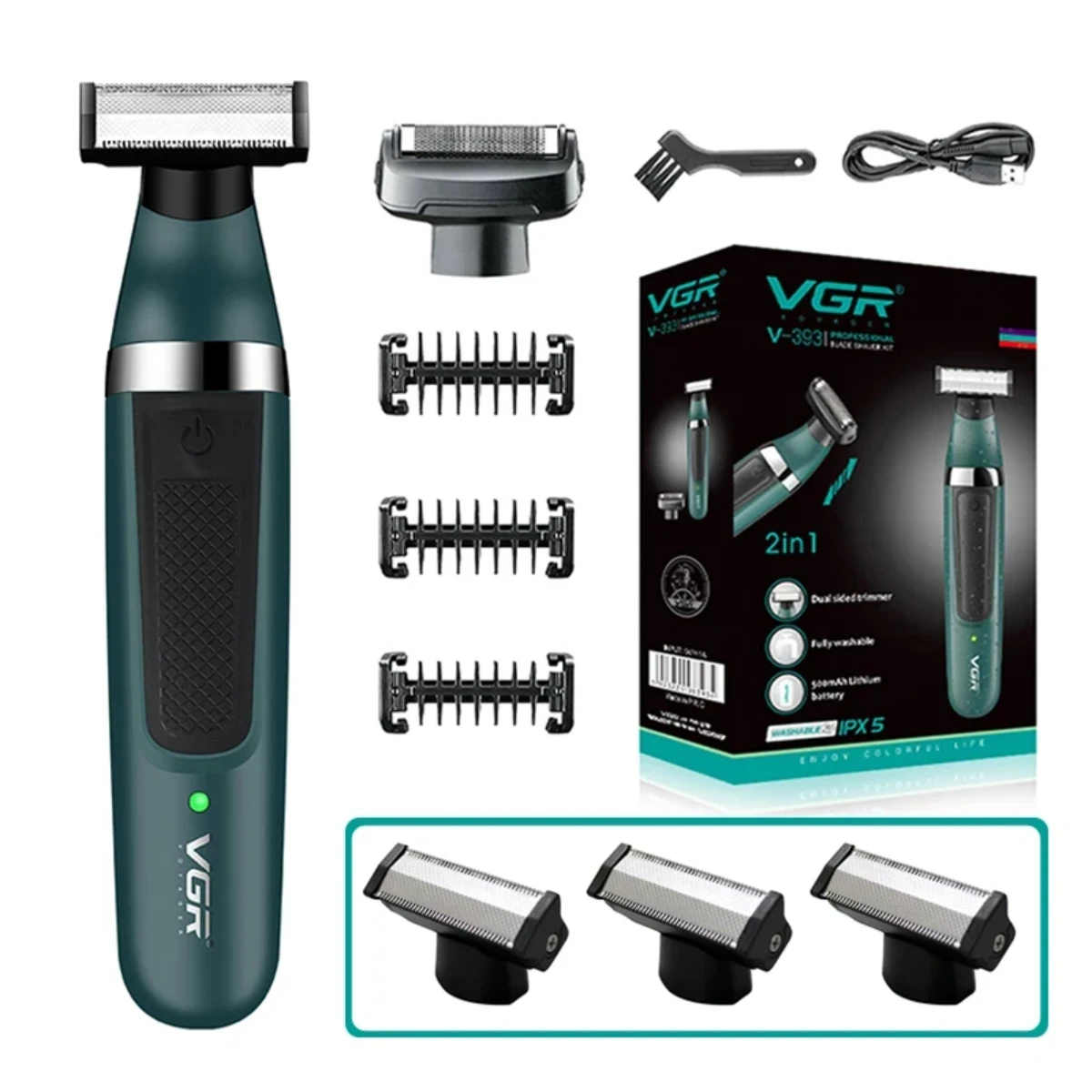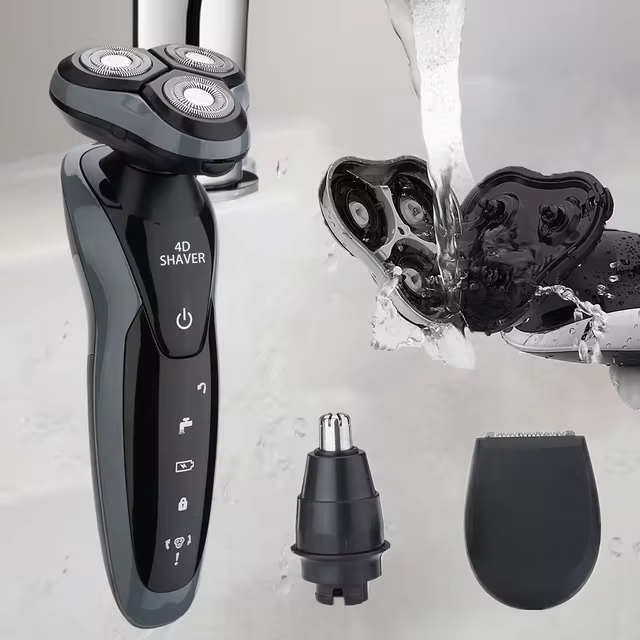Introduction to Electric Shaver Blades
Electric shaver blades are a crucial component of your grooming routine. They are the part of an electric shaver that comes into direct contact with your skin. They trim the hair by rapidly moving back and forth or rotating behind a protective foil. Understanding how they work and when to replace them is key for a close and comfortable shave.

Understanding Blade Lifespan and Performance
The lifespan and performance of electric shaver blades vary based on several factors. These include the type of hair you have, how often you shave, and how well you maintain your blades. Typically, blades can last between several months to a year. As blades dull with use, their performance drops, leading to a less efficient shave. Signs of dulling blades may include pulling or tugging of hair, skin irritation, or an uneven shave. It’s important to know how often to replace electric shaver blades to ensure the best shaving experience. Regular maintenance and cleaning can help maximize blade life and sustain performance over time.
Signs It’s Time to Replace Your Blades
Recognizing when it’s time to swap out the blades in your electric shaver is crucial. Here are some key signs that indicate your blades need replacing:
Wear Indicators on Modern Electric Shavers
Many recent electric shavers come with built-in wear indicators. These visual prompts alert you when blades become dull. Look for visible signs, such as a change in color or the appearance of symbols like arrows. When these indicators are clear, it’s time for a new blade. For example, the Philips OneBlade includes an arrow symbol that fully appears when a replacement is needed.
Tracking Blade Condition with Apps
To make life even simpler, certain brands offer apps to help track your blade’s condition. With the Philips OneBlade app, for instance, you’ll receive notifications based on your shaving routine, letting you know when to consider a blade change. Using an app can remind you when to replace electric shaver blades, ensuring consistent performance.
Factors Influencing Blade Longevity
The life of an electric shaver’s blades can last a varied duration. Several factors play a vital role here. Let’s delve into those factors that significantly impact blade longevity.
Types of Hair and Shaving Frequency
Different hair types and how often you shave are crucial factors. Coarser, thicker hair tends to dull blades faster. Shaving daily speeds up the wear compared to shaving less frequently. It is essential to consider your hair type and shaving habits when judging blade life.
Maintenance and Cleaning Practices
Proper maintenance and cleaning can extend blade life. After each use, clean your blades to remove hair and skin debris. Lubricating your blades can also help them last longer. It reduces friction between the blade and hair, which can cause wear. Follow your shaver’s manual for the best maintenance steps. Good practices make a big difference in how long your blades serve you.
 Recommended Replacing Schedule for Popular Brands
Recommended Replacing Schedule for Popular Brands
For an optimal shaving experience, it’s important to follow the recommended replacing schedule of your electric shaver blades. Different brands may have slightly varying recommendations based on their design and blade technology.
Philips OneBlade Replacement Tips
Philips suggests a four-month blade replacement schedule for the OneBlade. A visible wear indicator, an arrow symbol, shows when it’s time for a new blade. For older blade models, a green bar appears. These indicators help you maintain a sharp, effective shave. Use the Philips OneBlade app to track your blade’s condition and receive timely replacement reminders.
Guidelines for Other Leading Shaver Brands
Each brand has its guidelines for blade replacement. Some suggest changing blades every few months, others extend to a year, based on your usage. Always check the manual that came with your shaver, as it often contains specific maintenance and replacement instructions. Remember, frequent use and thicker hair types may necessitate more regular changes to keep your shave close and comfortable.
Step-by-Step Guide to Replacing Shaver Blades
Replacing electric shaver blades is simple but important for a smooth shave. Below is a guide to help you change blades safely and effectively.
Preparing Your Shaver
Before you begin, make sure you have the correct replacement blades. Check your shaver’s manual if you are not sure. A proper workspace is key. Find a flat, well-lit area to work on. Gather your tools, if any are required. Most modern shavers need no tools for blade replacement. Ensure your shaver is off and unplugged for safety. Clean your shaver of any remaining hair or debris to make the process easier.
Installing New Blades Safely
Open the blade compartment as per your model’s instructions. This usually involves pressing a button or gently pulling apart two pieces. Remove the old blade by lifting it out of the shaver. Take care not to touch the cutting edges. Secure it for proper disposal. Place the new blade into the shaver body. Make sure it snaps into place or sits firmly according to the design. Double-check that the blade does not move loosely within the compartment. Once installed, turn on your shaver to ensure the new blade functions correctly. Test it briefly without making contact with your skin.
Ensuring Optimal Shave Performance
To get the best shave, sharp blades and a fast, quality motor are key.
Importance of Sharp Blades
Sharp blades ensure a close, smooth shave without pulling hairs or causing irritation. They cut quickly and cleanly, reducing shaving time and risk of nicks. Dull blades can lead to uneven shaves and discomfort. Look for signs like tugging or uneven cutting to know when they’re dull.
Role of Motor Speed and Blade Quality
A shaver’s motor speed affects how fast the blades move. High-speed motors provide a faster and more efficient shave. Quality blades stay sharp longer and resist wear. Together, motor speed and blade quality determine shave closeness and comfort. Match these factors with your hair type and shaving habits for the best performance.
Recommendations from Manufacturers
Manufacturer Guidance
Most manufacturers provide specific recommendations regarding how often to replace electric shaver blades. Some companies suggest a replacement every 12 to 18 months, while others may recommend more frequent changes based on individual usage patterns. Always consult your user manual for the most accurate guidance for your specific model.
Repurchasing Compatible Parts
When it’s time to replace your blades, ensure that you purchase compatible replacement parts from reputable sources. Genuine parts are designed specifically for your model and can ensure optimal performance. Avoid generic parts that may not fit correctly or may compromise the performance of your electric shaver.
 Conclusion and Additional Maintenance Tips
Conclusion and Additional Maintenance Tips
Wrapping up, knowing when and how often to replace electric shaver blades is vital for a top-notch shave. The signs are clear: dull blades, visible wear indicators, or the nudge from a handy app should signal it’s time for a change. Remember, the type of hair, shaving frequency, and proper blade care all determine how long your blades will last. Philips OneBlade users can lean on the app for timely alerts, but everyone should heed their shaver’s recommended schedule.
Beyond just swapping out blades, regular cleaning and maintenance are must-dos. Clean blades after each use, and don’t skip out on lubrication to prolong their life. And, when you do switch to a new blade, make sure the installation is secure for safety and performance. High-speed motors and top-quality blades paired with consistent maintenance ensure an unbeatable shave every time.
Lastly, keep in touch with the current trends in electric shavers. Brands often update their recommendation based on the latest technology. Balancing hair types and usage habits with sharp blades and a fast motor is your ticket to smooth, comfortable shaves.
